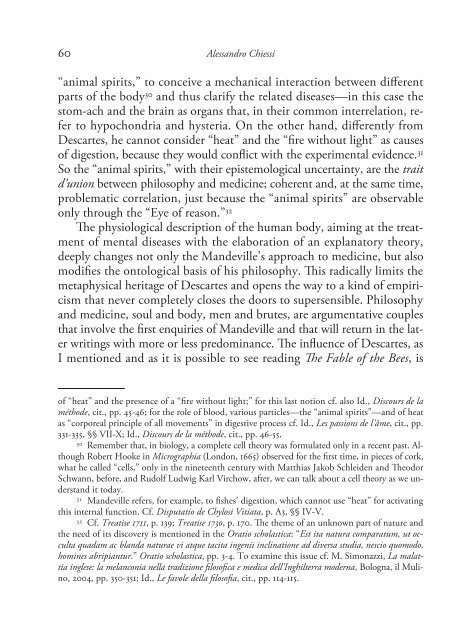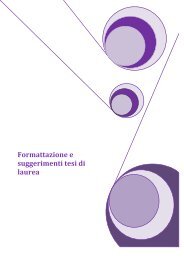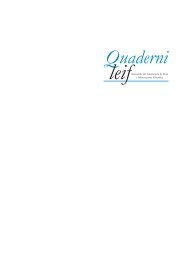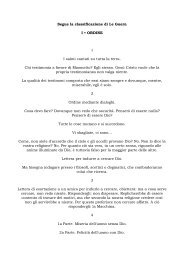qui - maria vita romeo
qui - maria vita romeo
qui - maria vita romeo
Create successful ePaper yourself
Turn your PDF publications into a flip-book with our unique Google optimized e-Paper software.
60 Alessandro Chiessi<br />
“animal spirits,” to conceive a mechanical interaction between different<br />
parts of the body 30 and thus clarify the related diseases—in this case the<br />
stom-ach and the brain as organs that, in their common interrelation, re -<br />
fer to hypochondria and hysteria. On the other hand, differently from<br />
Descartes, he cannot consider “heat” and the “fire without light” as causes<br />
of digestion, because they would conflict with the experimental evidence. 31<br />
So the “animal spirits,” with their epistemological uncertainty, are the trait<br />
d’union between philosophy and medicine; coherent and, at the same time,<br />
problematic correlation, just because the “animal spirits” are observable<br />
only through the “Eye of reason.” 32<br />
e physiological description of the human body, aiming at the treatment<br />
of mental diseases with the elaboration of an explanatory theory,<br />
deeply changes not only the Mandeville’s approach to medicine, but also<br />
modifies the ontological basis of his philosophy. is radically limits the<br />
metaphysical heritage of Descartes and opens the way to a kind of empiricism<br />
that never completely closes the doors to supersensible. Philosophy<br />
and medicine, soul and body, men and brutes, are argumentative couples<br />
that involve the first en<strong>qui</strong>ries of Mandeville and that will return in the later<br />
writings with more or less predominance. e influence of Descartes, as<br />
I mentioned and as it is possible to see reading e Fable of the Bees, is<br />
of “heat” and the presence of a “fire without light;” for this last notion cf. also Id., Discours de la<br />
méthode, cit., pp. 45-46; for the role of blood, various particles—the “animal spirits”—and of heat<br />
as “corporeal principle of all movements” in digestive process cf. Id., Les passions de l’âme, cit., pp.<br />
331-335, §§ VII-X; Id., Discours de la méthode, cit., pp. 46-55.<br />
30 Remember that, in biology, a complete cell theory was formulated only in a recent past. Although<br />
Robert Hooke in Micrographia (London, 1665) observed for the first time, in pieces of cork,<br />
what he called “cells,” only in the nineteenth century with Matthias Jakob Schleiden and eodor<br />
Schwann, before, and Rudolf Ludwig Karl Virchow, after, we can talk about a cell theory as we understand<br />
it today.<br />
31 Mandeville refers, for example, to fishes’ digestion, which cannot use “heat” for activating<br />
this internal function. Cf. Disputatio de Chylosi Vitiata, p. A3, §§ IV-V.<br />
32 Cf. Treatise 1711, p. 139; Treatise 1730, p. 170. e theme of an unknown part of nature and<br />
the need of its discovery is mentioned in the Oratio scholastica: “Est ita natura comparatum, ut occulta<br />
quadam ac blanda naturae vi atque tacita ingenii inclinatione ad diversa studia, nescio quomodo,<br />
homines abripiantur.” Oratio scholastica, pp. 3-4. To examine this issue cf. M. Simonazzi, La malattia<br />
inglese: la melanconia nella tradizione filosofica e medica dell’Inghilterra moderna, Bologna, il Mulino,<br />
2004, pp. 350-351; Id., Le favole della filosofia, cit., pp. 114-115.








